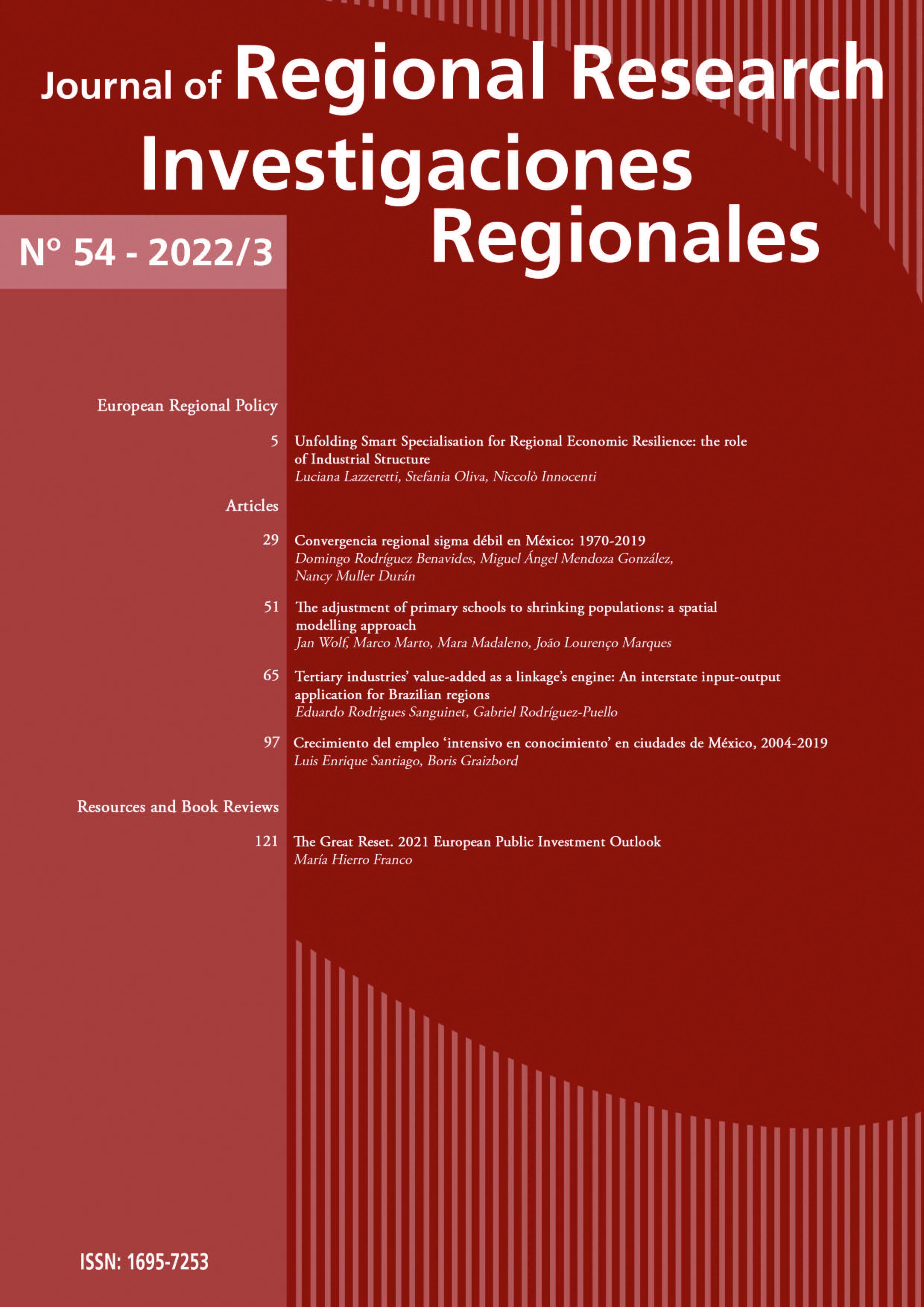Regional covergence in Mexico: a test of weak sigma convergence
DOI:
https://doi.org/10.38191/iirr-jorr.22.016Keywords:
Economic growth, weak sigma-convergence, regional inequality, MexicoAbstract
The objective of this paper is to provide evidence on the convergence hypothesis in Mexico through a relatively novel test, the weak s-convergence test applied not only to the whole period analyzed but also to different periods, which depend on the location of the break year representing trade liberalization, either 1986 or 1995, as well as to different groups classified according to terciles such as high, middle and low income. The results show that only in the first period we find evidence of this type of convergence for all the states, regardless of where the break year is located, while for the second period and for the whole period as a whole we find no evidence of weak s-convergence, however, we find evidence of weak sigma-convergence in both periods for the high and middle income groups but not for the low income groups, which suggests that the results found for all the states can be attributed to the behavior that the low income states show in this last period. Additionally, these results are consistent with the traditional sigma-convergence analysis.
Downloads
Published
Issue
Section
License
Aquellos autores/as que tengan publicaciones con esta revista, aceptan los términos siguientes:
En el momento de aceptar la publicación de sus artículos en Investigaciones Regionales / Journal of Regional Research, los autores acceden a utilizar la licencia Creative Commons CC BY-NC. IIRR/JRR es una revista abierta que permite a los autores retener el máximo control sobre su trabajo. Los autores aceptarán utilizar la licencia Creative Commons Attribution-NonCommercial. Esta licencia permite a cualquier persona copiar y distribuir el artículo con propósitos no comerciales, siempre y cuando se atribuya adecuadamente la atribución del trabajo a la revista y a los autores.

